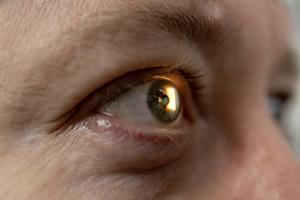Breakthrough Gene Editing Technique Offers Hope for Stargardt Disease Patients
Researchers have developed a highly efficient gene editing therapy that could potentially treat Stargardt disease, the most common form of inherited macular degeneration. This groundbreaking study, published in Nature Medicine on 8 January 2025, demonstrates the therapeutic use of a precision gene editing technology called base editing.
Stargardt disease affects 1 in 6,500 individuals and often results in legal blindness. There is currently no effective treatment available. The research team, led by Bence György and Botond Roska of the Institute of Molecular and Clinical Ophthalmology Basel (IOB), in collaboration with scientists from Beam Therapeutics led by David Bryson and Giuseppe Ciaramella, developed a highly optimized adenine base editor delivered by adeno-associated viral vectors (AAVs) to correct the most common mutation associated with Stargardt disease.
"Our approach achieved remarkably high levels of gene correction," said Dr. György. "We observed average editing rates of 75% in cone cells and 87% in retinal pigment epithelial cells. These results far exceed what we believe is necessary to provide clinical benefit to patients."
Importantly, the team demonstrated the effectiveness of their technique in multiple models, including human tissues: human retinal organoids, stem cell-derived retinal pigment epithelial cells, human retinas, and human retinal pigment epithelial cells. This comprehensive approach provides very strong evidence for the potential translatability of the treatment to human patients. “We are very encouraged to observe this level of potency in these relevant models at clinically relevant doses” said Dr. Bryson.
Alissa Muller, the study's first author, emphasized the precision and safety of their technique: "We conducted extensive off-target analysis and found no evidence of unintended editing in the retina or other parts of the body. This is crucial for the development of a safe and effective therapy."
The researchers also noted that their base editing approach could potentially be adapted to treat other inherited retinal diseases caused by similar types of mutations. These results represent a significant advancement in the field of ocular gene therapy. The next steps may include further safety studies and preparations for clinical trials. If successful, this gene editing approach could offer hope to thousands of individuals affected by Stargardt disease and potentially other inherited retinal disorders.
"This work exemplifies a key goal of IOB: combining our deep understanding of retinal biology and vision with breakthrough technologies to develop novel therapies for vision loss," said Dr. Roska.
Link to publication in Nature Medicine: https://www.nature.com/articles/s41591-024-03422-8
About IOB
At the Institute of Molecular and Clinical Ophthalmology Basel (IOB), basic researchers and clinicians work hand in hand to advance the understanding of vision and its diseases, and to develop new therapies for vision loss. IOB started its operations in 2018. The institute is constituted as a foundation, granting academic freedom to its scientists. Founding partners are the University Hospital Basel, the University of Basel and Novartis. The Canton of Basel-Stadt has granted the institute substantial financial support.
For more information, please contact:
Elsa Sigle
Head of Administration and Communications
Institute of Molecular and Clinical Ophthalmology Basel (IOB)
Email: elsa.sigle@iob.ch
Follow us on Social Media
X (Twitter): @IOB_ch
BlueSky: @IOBSwiss
LinkedIn: Institute of Molecular and Clinical Ophthalmology Basel (IOB)
Attachment

Legal Disclaimer:
EIN Presswire provides this news content "as is" without warranty of any kind. We do not accept any responsibility or liability for the accuracy, content, images, videos, licenses, completeness, legality, or reliability of the information contained in this article. If you have any complaints or copyright issues related to this article, kindly contact the author above.


